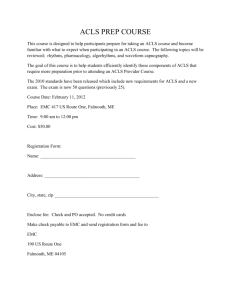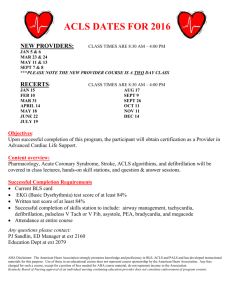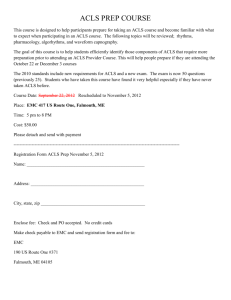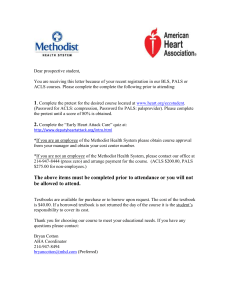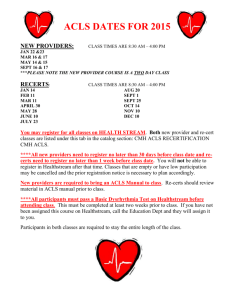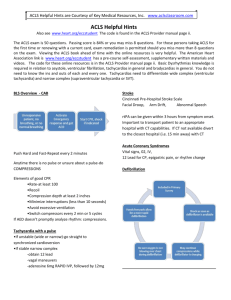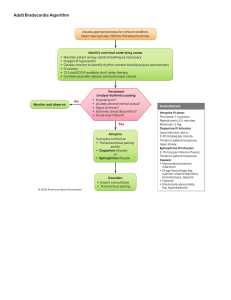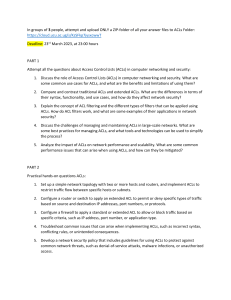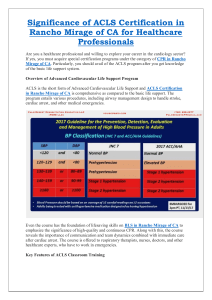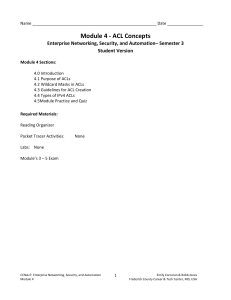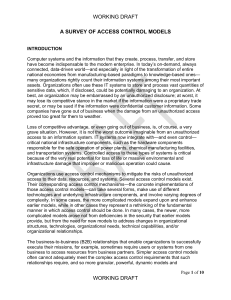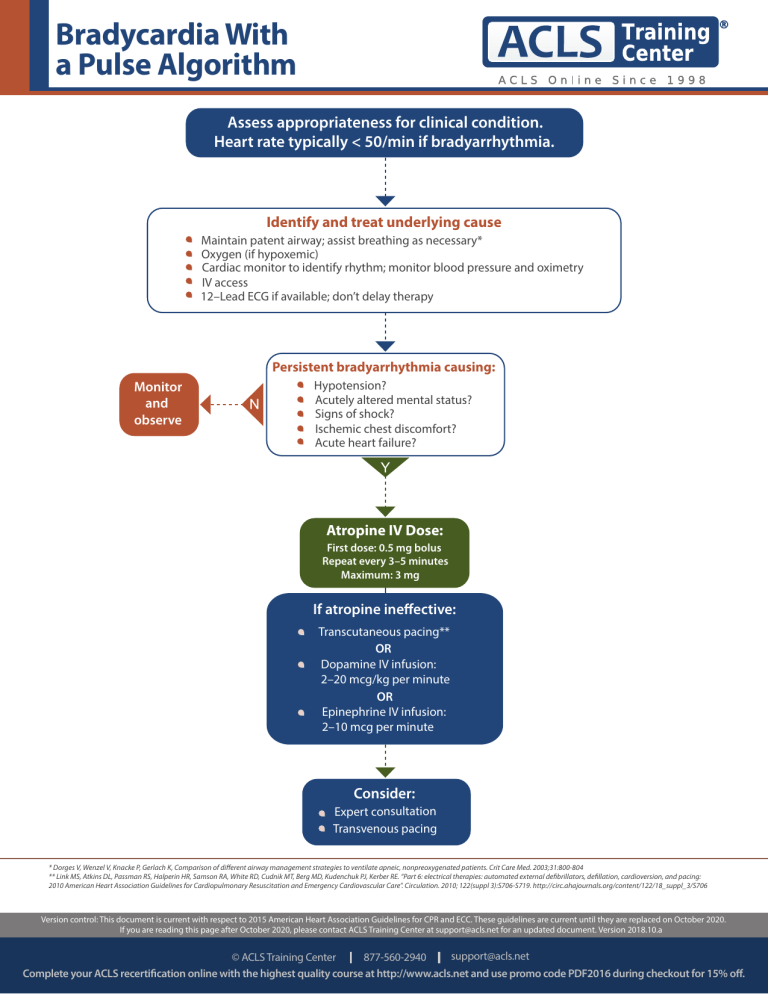
Bradycardia With a Pulse Algorithm Assess appropriateness for clinical condition. Heart rate typically < 50/min if bradyarrhythmia. Identify and treat underlying cause Maintain patent airway; assist breathing as necessary* Oxygen (if hypoxemic) Cardiac monitor to identify rhythm; monitor blood pressure and oximetry IV access 12–Lead ECG if available; don’t delay therapy Persistent bradyarrhythmia causing: Monitor and observe Hypotension? Acutely altered mental status? Signs of shock? Ischemic chest discomfort? Acute heart failure? Atropine IV Dose: First dose: 0.5 mg bolus Repeat every 3–5 minutes Maximum: 3 mg If atropine ineffective: Transcutaneous pacing** OR Dopamine IV infusion: 2–20 mcg/kg per minute OR Epinephrine IV infusion: 2–10 mcg per minute Consider: Expert consultation Transvenous pacing * Dorges V, Wenzel V, Knacke P, Gerlach K, Comparison of different airway management strategies to ventilate apneic, nonpreoxygenated patients. Crit Care Med. 2003;31:800-804 ** Link MS, Atkins DL, Passman RS, Halperin HR, Samson RA, White RD, Cudnik MT, Berg MD, Kudenchuk PJ, Kerber RE. “Part 6: electrical therapies: automated external defibrillators, defillation, cardioversion, and pacing: 2010 American Heart Association Guidelines for Cardiopulmonary Resuscitation and Emergency Cardiovascular Care”. Circulation. 2010; 122(suppl 3):S706-S719. http://circ.ahajournals.org/content/122/18_suppl_3/S706 Version control: This document is current with respect to 2015 American Heart Association Guidelines for CPR and ECC. These guidelines are current until they are replaced on October 2020. If you are reading this page after October 2020, please contact ACLS Training Center at support@acls.net for an updated document. Version 2018.10.a support@acls.net © ACLS Training Center 877-560-2940 Complete your ACLS recertification online with the highest quality course at http://www.acls.net and use promo code PDF2016 during checkout for 15% off.

